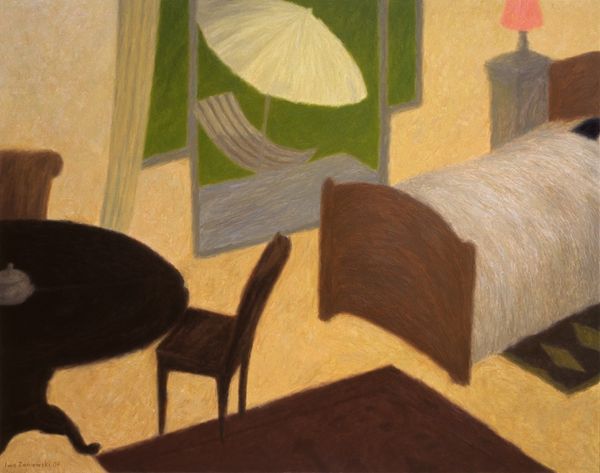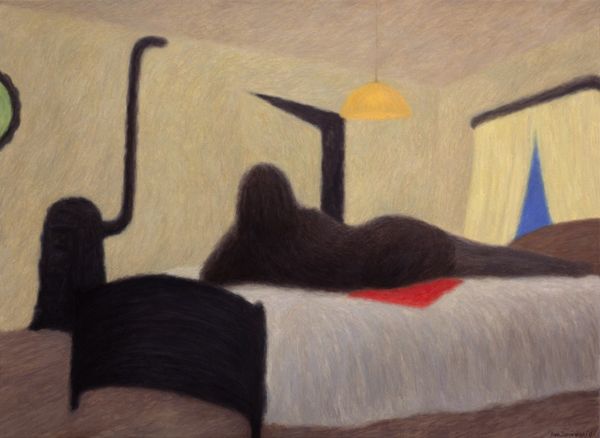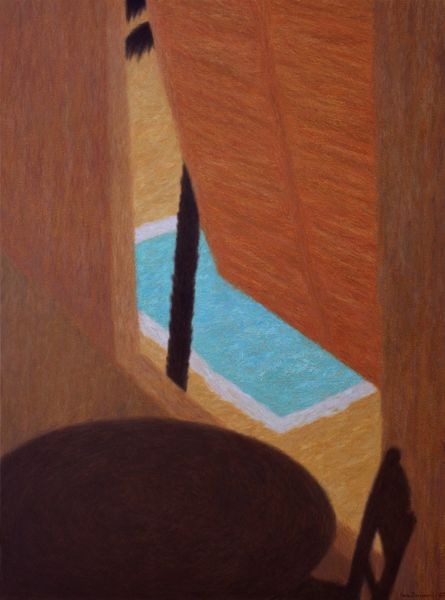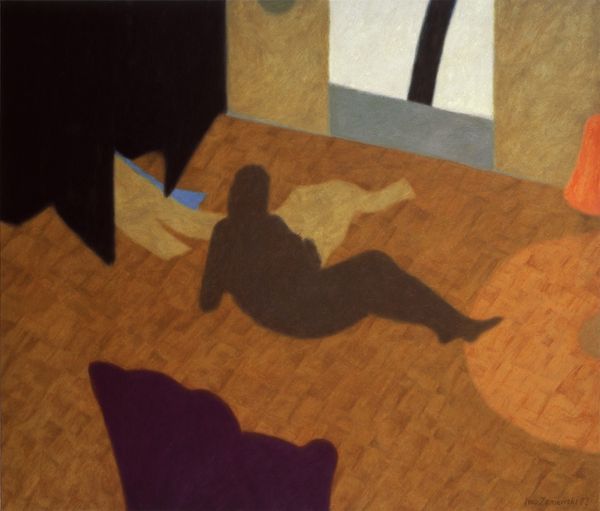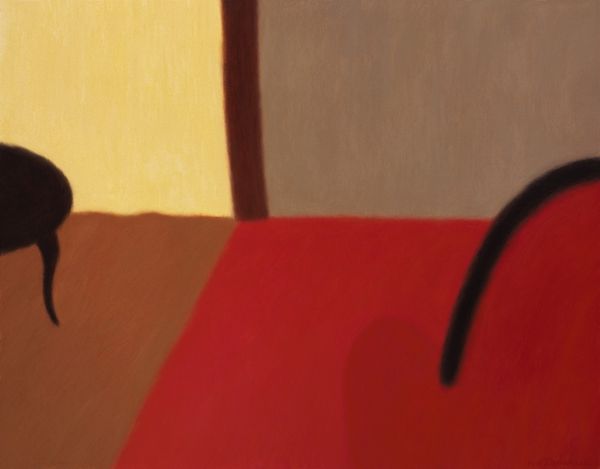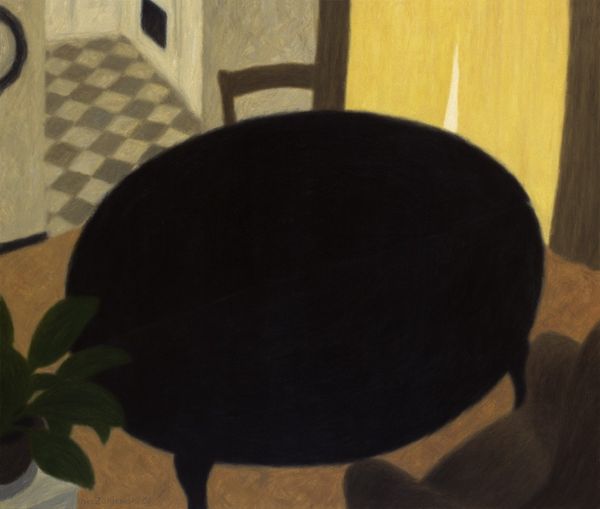
painting, oil-paint
#
abstract painting
#
painting
#
impressionism
#
oil-paint
#
landscape
#
painted
#
possibly oil pastel
#
oil painting
#
intimism
#
underpainting
#
expressionism
#
painting painterly
#
genre-painting
Copyright: Modern Artists: Artvee
Editor: We’re looking at Iwo Zaniewski's *The Room with a View*, an oil painting that feels… quiet, almost dreamlike, due to its muted color palette and simple shapes. There's this fascinating interplay between interior space and the expansive seascape visible through the window. What draws your attention to this piece? Curator: Immediately, the composition strikes me. Notice the distinct arrangement of forms—the rectilinear window contrasting with the curvilinear lines of the furniture. There's a tension created by these contrasting elements. Consider the dark table: how does its placement affect the balance of the work? Editor: It seems to ground the piece, anchoring the airy seascape, perhaps? Is the somewhat blurry style a conscious move to reduce the detail of real space? Curator: Precisely. The "painterly" effect reduces the illusion of depth and brings our focus back to the surface. The forms become less about representing an actual room, and more about an exercise in shapes and colors. Look at how the cool tones of the sea and sky are offset by the warmth of the room's walls. Do you think this has any further implications to our viewing? Editor: It's creating an intriguing spatial ambiguity through form, color, and light; it is abstract but suggests narrative through recognizable objects. That contrast holds my gaze longer than I first expected. Curator: Exactly, our engagement deepens as the shapes create a puzzle, requiring an analysis of form to access content. What seems like simple composition contains visual intrigue once decoded. Editor: It makes sense that simplifying visual elements draws my attention to composition! I didn’t think about the semiotics involved in those specific choices. Curator: Analyzing structural components illuminates the intentionality in any visual creation. It shows how careful control leads to intriguing work.
Comments
No comments
Be the first to comment and join the conversation on the ultimate creative platform.

